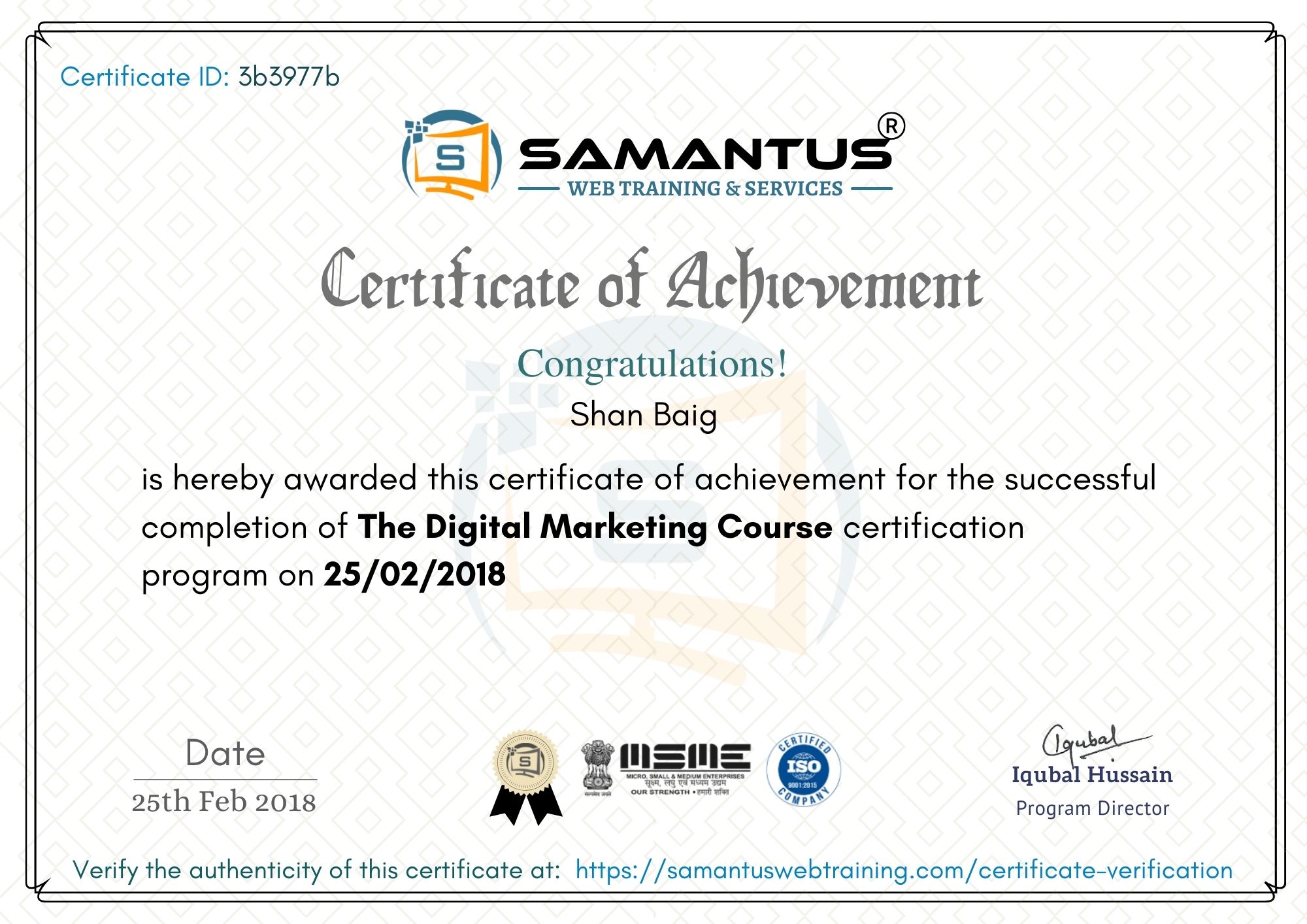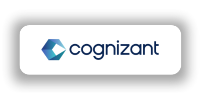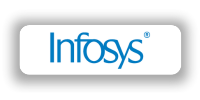Best Social Media Marketing Course in kerala
A Whole Guide to Social Media Marketing : Learn skills that are in demand and become equipped for work in Kerala.

What you'll learn
Whats Material Includes?
- Introduction to Social Media Marketing
- Building Your Social Media Presence
- Content Creation for Social Media
- Content Management and Scheduling
- Community Building and Engagement
- Conversion tracking
- Tools
- Social media strategy
- Advanced Social Media Strategies
- Social Media Analytics and Reporting
- Social Media Advertising

Complete a Social Media Marketing course with Samantus
- Live Project
- 95% Practical
- 100% Placement help

Get a Certificate in Social Media Marketing Course in kerala
Unlock Your Potential: Get Your Digital Marketing Certificate Today

Award winning

Make your Career
Course Curriculum (Basic to Advanced):
1: Introduction to Social Media Marketing
In this module, we will provide an overview of social media marketing, its significance in today’s digital landscape, and fundamental concepts to lay the groundwork for effective social media strategies.
Lesson 1: Understanding Social Media Marketing
- Defining Social Media Marketing and its Evolution in Digital Marketing Strategies
- Exploring the Role of Social Media Platforms in Brand Communication and Customer Engagement
Lesson 2: Social Media Marketing’s Benefits and Opportunities
- Identifying Key Benefits of Social Media Marketing for Businesses, including Brand Awareness, Customer Acquisition, and Loyalty
- Exploring Opportunities for Audience Engagement, Market Research, and Competitive Analysis on Social Media
Lesson 3: Social Media Platforms Overview
- This article provides an overview of major social media platforms such as Facebook, Instagram, Twitter, LinkedIn, YouTube, TikTok, etc.
- Understanding Audience Demographics, Content Formats, and Engagement Dynamics on Each Platform
Lesson 4: Setting Social Media Marketing Goals
- Establishing Clear and Measurable Goals for Social Media Marketing Efforts
- Aligning social media goals with overall business objectives and marketing strategies
Lesson 5: Identifying a Target Audience
- Identifying and understanding target audience segments on social media
- Conducting audience research to gain insights into preferences, behaviors, and content needs
Lesson 6: Social Media Content Strategy
- Developing a Comprehensive Content Strategy for Social Media Platforms
- Planning content themes, formats, and cadence to engage and delight target audiences
Lesson 7: Social Media Advertising Fundamentals
- Introduction to Social Media Advertising Options, including Paid Ads, Sponsored Content, and Promoted Posts
- Understanding targeting options, budgeting, and ad formats on various social media platforms
Lesson 8: Community Management and Engagement
- Building and nurturing communities on social media platforms
- Implementing Strategies for Active Engagement, Customer Support, and Reputation Management
Lesson 9: Social Media Analytics and Measurement
- Tracking and Measuring Social Media Performance Metrics with Analytics Tools
- Analyzing Data to Evaluate Campaign Effectiveness, Audience Engagement, and ROI
Lesson 10: Emerging Trends and Future Outlook
- Exploring Emerging Trends and Technologies Shaping the Future of Social Media Marketing
- Anticipating and adapting to industry shifts to stay ahead of the curve
2: Building Your Social Media Presence
In this module, we will delve into strategies and tactics for establishing a strong and engaging presence on social media platforms to effectively connect with your target audience.
Lesson 1: Crafting Your Brand Identity
- Defining Your Brand Voice, Values, and Personality for Consistent Messaging Across Social Media Platforms
- Developing brand guidelines to maintain cohesion and recognition
Lesson 2: Choosing the Right Social Media Platforms
- Evaluating factors such as audience demographics, platform features, and business goals to select appropriate platforms
- Prioritizing platforms based on audience reach and engagement potential
Lesson 3: Optimizing Social Media Profiles
- Creating Complete and Compelling Social Media Profiles with Clear Branding, Descriptions, and Visuals
- Leveraging Platform-Specific Features and Optimization Techniques for Maximum Visibility
Lesson 4: Content Planning and Scheduling
- Developing a Content Calendar with a Mix of Engaging Content Types, Themes, and Formats
- Using social media management tools to schedule and automate content publishing
Lesson 5: Creating Engaging Content
- Crafting high-quality and relevant content that resonates with your audience’s interests and needs
- Incorporating Visuals, Videos, Polls, and Interactive Content to Drive Engagement
Lesson 6: Building and Growing Your Audience
- Implementing strategies for audience growth, including organic tactics, paid advertising, and cross-promotion
- Engaging with your audience by responding to comments, messages, and mentions
Lesson 7: Establishing Thought Leadership and Authority
- Sharing Valuable Insights, Expertise, and Industry Knowledge to Position Your Brand as a Trusted Authority
- Participating in Industry Conversations, Thought Leadership Forums, and Webinars
Lesson 8: Influencer Collaboration and Partnerships
- Identifying and partnering with influencers and brand advocates to increase your reach and credibility
- Creating authentic and mutually beneficial relationships with influencers
Lesson 9: Social Media Community Management
- On social media, you can build and nurture communities around your brand.
- Facilitating Conversations, Hosting Q&A Sessions, and Encouraging User-Generated Content
Lesson 10: Monitoring and Improving Your Social Media Presence
- Monitoring Social Media Performance Metrics, including Engagement, Reach, and Conversions
- Iteratively Improving Your Social Media Strategy Based on Data Insights and Feedback
3: Content Creation for Social Media
In this module, we will explore strategies and best practices for creating captivating and engaging content specifically tailored for social media platforms.
Lesson 1: Understanding Social Media Content Formats
- Exploring Different Content Formats: Images, Videos, GIFs, Carousels, Stories, Live Streams, etc.
- Identifying Platform-Specific Content Opportunities and Constraints
Lesson 2: Developing Compelling Visual Content
- Creating Eye-Catching Graphics, Photos, and Infographics to captivate the Audience
- Utilizing Design Tools and Templates to Create Professional and On-Brand Visuals
Lesson 3: Creating Engaging Video Content
- Planning, Scripting, and Shooting High-Quality Videos for Social Media Platforms
- Incorporating Storytelling, Emotion, and Visual Appeal to Increase Video Engagement
Lesson 4: Writing Captivating Copy and Captions
- Crafting concise and persuasive copy for social media posts and advertisements
- Incorporating brand voice, personality, and calls to action to drive audience interaction
Lesson 5: Leveraging User-Generated Content (UGC)
- Encouraging and Curating User-Generated Content from Your Audience
- Showcasing Customer Stories, Testimonials, and Reviews to Build Trust and Engagement
Lesson 6: Harnessing the Power of Hashtags
- Understanding the Role of Hashtags in Social Media Discovery and Reach
- Researching and using relevant hashtags to increase visibility and engagement
Lesson 7: Planning and Scheduling Content
- Developing a Content Calendar and Editorial Schedule for Consistent Posting
- Using social media management tools to schedule and automate content publishing
Lesson 8: Engaging Interactive Content Formats
- Creating Polls, Quizzes, Contests, and Interactive Stories to Drive Audience Participation
- Encourage two-way communication and engagement with interactive content.
Lesson 9: Optimizing Content for Mobile
- Designing Mobile-Friendly Content for Seamless Viewing and Interaction on Mobile Devices
- Ensure fast loading times and clear calls to action for mobile users.
Lesson 10: Iterative Improvement and Experimentation
- Analyzing Content Performance Metrics, including Engagement, Reach, and Conversions
- Experimenting with Different Content Formats, Themes, and Messaging to Optimize Results
4: Content Management and Scheduling
In this module, we will explore strategies and tools for effectively managing and scheduling your social media content to maintain consistency and maximize engagement.
Lesson 1: Content Organization and Workflow
- Establishing a System for Organizing and Managing Content Assets, including Images, Videos, and Copy
- Implementing Content Approval Processes and Collaboration Tools for Efficient Workflow
Lesson 2: Developing a Content Calendar
- Creating a Comprehensive Content Calendar with Planned Posts, Themes, and Campaigns
- Incorporating key dates, holidays, and events relevant to your audience and industry
Lesson 3: Content Curation and Aggregation
- Curating relevant and valuable content from external sources to supplement your own content
- Aggregating user-generated content and influencer contributions to diversify your content mix
Lesson 4: Content Scheduling Tools and Platforms
- Exploring social media management tools such as Buffer, Hootsuite, and Sprout Social for content scheduling
- Leveraging Social Media Platforms’ Built-In Scheduling Features for Native Posting
Lesson 5: Tailoring Content for Different Platforms
- Adapting content formats, lengths, and messaging to suit the preferences and specifications of each social media platform
- Optimizing post timing and frequency for maximum reach and engagement on each platform
Lesson 6: Batch Content Creation and Planning
- To streamline workflow and save time, implement batch content creation sessions.
- Planning and Creating Content in Advance to Maintain Consistency and Avoid Last-Minute Rushes
Lesson 7: Automated Publishing and Posting
- Utilizing automation tools and features to schedule content publishing in advance
- Ensuring Accuracy and Timeliness of Posts with Automated Publishing Schedules
Lesson 8: Monitoring and Adjusting the Content Calendar
- Regularly Monitoring Content Performance Metrics and Audience Feedback to Evaluate Content Effectiveness
- Making adjustments to the content calendar and strategy based on data insights and feedback.
Lesson 9: Crisis Management and Contingency Planning
- Developing contingency plans and protocols for handling social media crises and emergencies
- Implementing monitoring tools and processes to detect and respond to negative feedback and issues
Lesson 10: Continuous Improvement and Optimization
- Iteratively Optimizing Content Management Processes and Scheduling Strategies Based on Performance Data and Lessons Learned
- Experimenting with New Tools, Techniques, and Approaches to Enhance Efficiency and Effectiveness
5: Community Building and Engagement
In this module, we will explore strategies and techniques for nurturing a vibrant and engaged community on social media, fostering meaningful interactions, and building long-lasting relationships with your audience.
Lesson 1: Understanding Community Building on Social Media
- Defining the concept of community building and its importance for brand engagement and loyalty
- Exploring the Benefits of Building a Strong Community, including Brand Advocacy and User-Generated Content
Lesson 2: Identifying Your Community and Audience Segmentation
- Identifying and Segmenting Your Target Community Based on Shared Interests, Values, and Behaviors
- Understanding the diverse needs and preferences of community members to tailor engagement strategies
Lesson 3: Establishing Community Guidelines and Values
- Developing clear community guidelines and values to govern behavior and interaction within your community
- Communicating Expectations for Respectful Communication, Constructive Feedback, and Positive Engagement
Lesson 4: Creating Engaging Community Content
- Crafting content specifically designed to spark conversations, encourage participation, and foster connection
- Leveraging Polls, Q&A Sessions, Contests, and Challenges to Stimulate Engagement
Lesson 5: Facilitating Meaningful Conversations and Interactions
- Actively engaging with community members by responding to comments, messages, and mentions.
- Encourage peer-to-peer interaction and collaboration to build a sense of belonging and community spirit.
Lesson 6: Hosting Live Events and Online Gatherings
- Organizing virtual events, webinars, live Q&A sessions, and AMAs (Ask Me Anything) to facilitate real-time interaction and engagement
- Creating Opportunities for Community Members to Connect and Network with Each Other
Lesson 7: Recognizing and Rewarding Community Contributions
- Acknowledging and celebrating community members for their contributions, creativity, and support
- Implementing reward programs, badges, and recognition systems to encourage continued engagement and participation
Lesson 8: Monitoring and Moderating Community Activities
- Implementing community management practices to maintain a positive and inclusive environment
- Monitoring Discussions, Addressing Conflict, and Enforcing Community Guidelines as Needed
Lesson 9: Measuring Community Engagement and Impact
- Tracking key metrics such as engagement rate, active members, and sentiment analysis to assess community health and vibrancy
- Analyzing data insights to inform community strategy and iterative improvement
Lesson 10: Cultivating Long-Term Relationships and Advocacy
- Building trust and loyalty by providing value, support, and personalized interaction
- Fostering brand advocacy and ambassadorship among community members to increase reach and influence
6: Social Media Advertising
In this module, we will dive into the realm of social media advertising, exploring the various platforms, ad formats, targeting options, and strategies to effectively reach and engage your target audience.
Lesson 1: Introduction to Social Media Advertising
- Understanding Social Media Advertising’s Role in Digital Marketing Strategies
- Advertising on Social Media Platforms: Benefits and Opportunities
Lesson 2: Social Media Advertising Platforms Overview
- Overview of Major Social Media Advertising Platforms: Facebook Ads, Instagram Ads, Twitter Ads, LinkedIn Ads, etc.
- Understanding Platform-Specific Features, Audience Demographics, and Ad Formats
Lesson 3: Setting Advertising Objectives and Goals
- Defining clear and measurable advertising objectives, such as brand awareness, lead generation, or sales conversion
- Aligning advertising goals with overall business objectives and marketing strategies
Lesson 4: Audience targeting and segmentation
- Leveraging Advanced Targeting Options to Reach Specific Audience Segments Based on Demographics, Interests, Behaviors, and Custom Audiences
- Refined Targeting Criteria to Ensure Relevance and Precision in Ad Delivery
Lesson 5: Ad creative development
- Crafting a compelling ad creative that grabs attention, conveys a brand message, and drives action
- Maximizing Ad Effectiveness with Visuals, Copywriting Techniques, and Call-to-Action (CTA)
Lesson 6: Ad Formats and Placement Options
- Exploring Different Ad Formats: Image Ads, Video Ads, Carousel Ads, Story Ads, etc.
- Selecting optimal ad placements and formats based on campaign objectives and audience preferences
Lesson 7: Budgeting and Bidding Strategies
- Setting advertising budgets and allocating funds across campaigns, ad sets, and ads
- Choosing bidding strategies (e.g., cost per click, cost per impression, cost per conversion) to optimize ad performance
Lesson 8: Ad Campaign Management and Optimization
- Monitoring ad performance metrics such as click-through rate (CTR), conversion rate, and return on ad spend (ROAS)
- Iteratively optimizing ad campaigns based on data insights and performance trends
Lesson 9: Ad Testing and Experimentation
- Conducting A/B testing to compare different ad variations, targeting options, and messaging
- Iteratively Testing and Refining Ad Creative, Audience Targeting, and Campaign Settings
Lesson 10: Ad Reporting and Analysis
- Creating and analyzing Ad Performance Reports to Assess Campaign Effectiveness and ROI
- Extracting insights to inform future advertising strategies and decision-making
7: Social Media Analytics and Reporting
In this module, we will delve into the world of social media analytics and reporting, exploring the tools and techniques for measuring and analyzing the performance of your social media efforts, and deriving actionable insights to inform strategic decisions.
Lesson 1: The Importance of Social Media Analytics
- Understanding the significance of social media analytics in evaluating campaign effectiveness and ROI
- Exploring the Role of Data-Driven Insights in Optimizing Social Media Strategy and Content Performance
Lesson 2: Key Social Media Metrics and KPIs
- Identifying key performance indicators (KPIs) relevant to social media marketing, including engagement rate, reach, impressions, click-through rate (CTR), conversion rate, and return on investment (ROI),
- Understanding the Significance of Each Metric and its Alignment with Business Objectives
Lesson 3: Social Media Analytics Tools and Platforms
- Exploring a Range of Social Media Analytics Tools and Platforms, such as Facebook Insights, Twitter Analytics, Instagram Insights, LinkedIn Analytics, and Third-Party Analytics Tools
- Leveraging built-in analytics features and custom reports to gain actionable insights
Lesson 4: Setting Up Social Media Tracking and Measurement
- Configuring Tracking Parameters, Conversion Goals, and UTM Parameters to Measure Campaign Performance and Attribution
- Implementing conversion tracking pixels and event tags to monitor user behavior across social media platforms
Lesson 5: Data Visualization and Dashboard Creation
- Creating Custom Dashboards and Reports to Visualize Key Social Media Metrics and Performance Trends
- Utilizing Data Visualization Tools and Techniques to Communicate Insights Effectively
Lesson 6: Audience Analysis and Segmentation
- Analyzing Audience Demographics, Interests, and Behavior to Understand Your Social Media Following
- Segmenting audience data to identify high-value segments and tailor content and campaigns accordingly
Lesson 7: Content Performance Analysis
- Evaluating the Performance of Social Media Content, including Posts, Ads, and Campaigns, to Identify Top-Performing Content Types, Formats, and Themes
- Analyzing engagement metrics, reach, impressions, and conversions to determine content effectiveness
Lesson 8: Competitive Analysis and Benchmarking
- Conducting a competitive analysis to benchmark your social media performance against industry competitors and peers
- Identifying Strengths, Weaknesses, Opportunities, and Threats (SWOT) to Inform Strategy Development
Lesson 9: Reporting Best Practices
- Developing Comprehensive Social Media Reports to Communicate Performance Metrics, Insights, and Recommendations to Stakeholders
- Tailoring reports to audience preferences and objectives ensures relevance and actionability.
Lesson 10: Continuous Optimization and Iterative Improvement
- Iteratively Optimizing Social Media Strategy and Content Based on Data Insights and Performance Analysis
- Implementing A/B testing, experimentation, and iterative improvement to increase campaign effectiveness over time
8: Advanced Social Media Strategies
In this module, we will explore advanced strategies and tactics to take your social media marketing efforts to the next level, leveraging innovative approaches and emerging trends for maximum impact.
Lesson 1: Social Listening and Sentiment Analysis
- Implementing social listening tools and techniques to monitor conversations, mentions, and brand sentiment across social media platforms
- Utilizing Sentiment Analysis to Understand Audience Perceptions, Identify Trends, and Mitigate Reputation Risks
Lesson 2: Social Media Influencer Collaboration
- Developing Influencer Marketing Strategies to Collaborate with Key Influencers and Thought Leaders in Your Industry
- Establishing authentic partnerships and co-creation opportunities to amplify reach and engagement
Lesson 3: Employee Advocacy Programs
- Leveraging Employee Advocacy Programs to Harness Your Internal Team’s Power as Brand Ambassadors and Content Contributors
- Empowering Employees to Share Brand Messages, Thought Leadership Content, and Industry Insights on Social Media
Lesson 4: Social Media Crisis Management
- Developing Crisis Management Protocols and Playbooks to Respond Effectively to Social Media Crises, Negative Feedback, and PR Challenges
- Implementing monitoring and response strategies to manage reputational risks and protect brand integrity
Lesson 5: Social Commerce and Shoppable Content
- Exploring Opportunities for Social Commerce and Shoppable Content Integration on Social Media Platforms
- Implementing e-commerce features, product tags, and buy buttons to drive sales and conversions directly from social media
Lesson 6: Gamification and Interactive Experiences
- Incorporating gamification elements and interactive experiences into social media campaigns to increase engagement and participation
- Creating contests, challenges, and quizzes to foster community interaction and brand loyalty
Lesson 7: Augmented Reality (AR) and Virtual Reality (VR) Experiences
- Harnessing Augmented Reality (AR) and Virtual Reality (VR) Technologies to Create Immersive Brand Experiences on Social Media
- Developing AR filters, lenses, and VR experiences to engage audiences and differentiate your brand
Lesson 8: Cross-Channel Integration and Omnichannel Strategies
- Integrating Social Media with Other Marketing Channels, including Email, SMS, and Offline Channels, to Create Seamless Omnichannel Experiences
- Implementing Cross-Channel Attribution Models to Understand the Impact of Social Media on Overall Marketing Performance
Lesson 9: Globalization and Localization Strategies
- Expanding Social Media Marketing Efforts to Global Markets with Localization Strategies, Multilingual Content, and Cultural Sensitivity
- Adapting content and campaigns to local preferences, traditions, and regulatory requirements
Lesson 10: Emerging Trends and Future Outlook
- Exploring Emerging Trends and Technologies Shaping the Future of Social Media Marketing, including AI, Voice Search, and Social Commerce Innovations
- Anticipating and Adapting to Industry Changes to Stay Ahead of the Curve and Maintain Competitive Advantage
Companies That Hire
(Freshers & Experienced Required As Per Company Norms)










